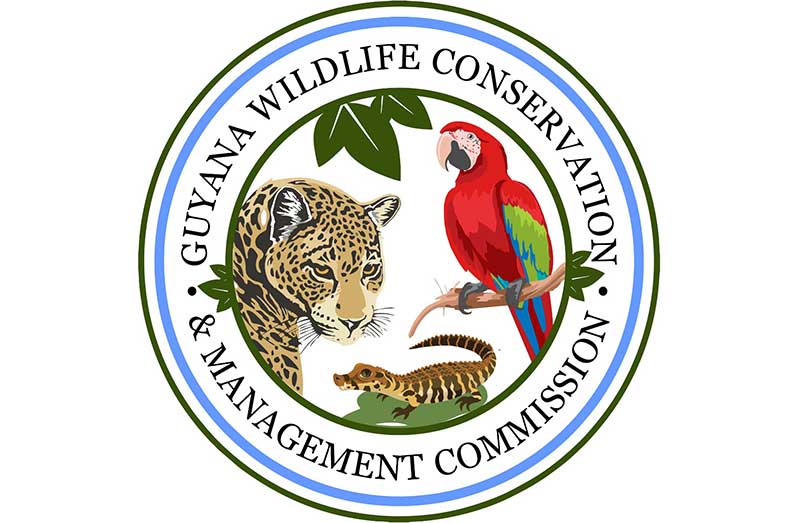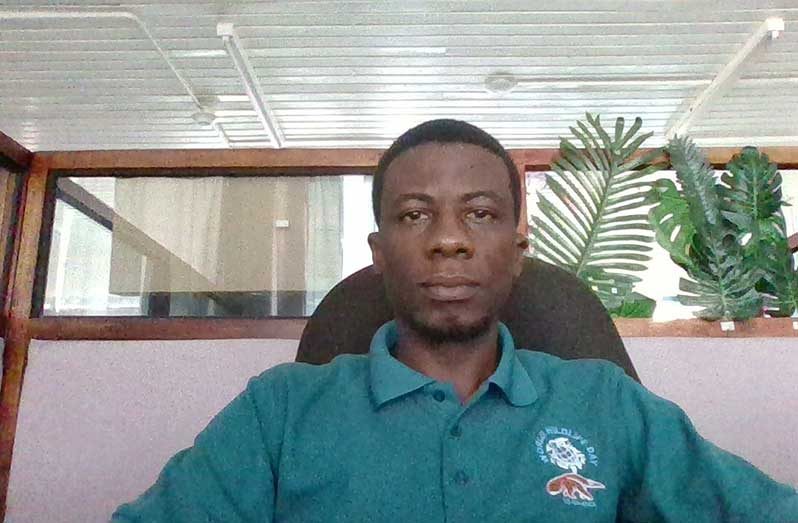WILDLIFE conservation plays a vital role in preserving biodiversity, mitigating climate change and sustaining the health of the planet. It is important for not only biodiversity, climate change, and ecosystem health, but human well-being as well.
Locally, the Guyana Wildlife Conservation and Management Commission (GWCMC), which was established by way of the Wildlife Conservation and Management Act of 2016, aims to secure the future of wildlife in Guyana through effective, sustainable management and conservation.
Speaking exclusively to this paper, the Communications Officer at the GWCMC, Deuel Hughes, said the commission has a number of departments with different roles to play to achieve this goal. One is the licensing and permitting department, which is responsible for granting licences and permits, as well as all legal documents related to the trading of wildlife. This, he explained, involves persons utilising wildlife locally and persons who either export wildlife from Guyana to other countries, or import wildlife from other countries to Guyana.
There is also the monitoring and compliance department which is responsible for monitoring and enforcing the provisions of the act, along with other regulations pertaining to wildlife in Guyana.
Hughes noted that there is the Wildlife Conservation Management and Sustainable Use Regulations, which covers the proper utilisation of wildlife.
This department is also responsible for responding to wildlife incidents.
The research department, responsible for conducting scientific research on wild species to devise measures for the protection of our wildlife, including the determination of closed seasons for wildlife and determination of quotas for the trade of various species.
And finally, there is the communications department, which is responsible for raising awareness on wildlife conservation management and sustainable use of wildlife. It also provides general awareness about wildlife.
Hughes emphasised that some of the misconceptions about wildlife include the common opinion that wildlife belongs in forested (bushy) areas. According to Hughes, wherever wildlife is found, that environment or community is their home. Another misconception is that the trading of wildlife is an illegal activity.
Persons are allowed to trade wildlife or be in the business of wildlife. However, they do need to have a licence to be able to do this.
To be licensed to do international trade of wildlife, persons would need to submit an application and supporting documents, which include their ID cards; they must also have a business registration and must have a holding premises to hold the wildlife that they would be exporting or importing.
“Persons who are going to be in the international trade, they also need to attend an interview, whereby we basically try to ensure that they are aware of the needs of the animals and they need to also show knowledge of the Convention on International Trade in Endangered Species of Wildlife, Flora and Fauna, …the acronym for that is CITES,” he related.
For local trade there are six categories of licences for persons who would engage in the wildlife business locally: they would need a form of ID and a TIN certificate. Persons who would be hunting would need a firearm licence and for persons selling wild meat, they would need a food handlers certificate.
In 2024, the GWCMC distributed 25 export licences and issued 83 domestic local licences. Training was also conducted for a number of officers from the Guyana Livestock Development Authority. In total, the commission received around 39 reports of wildlife incidents, which included animals such as giant anteaters, ocelots, monkeys, caimans, and snakes.
Approximately 30 awareness sessions were conducted in a number of schools as well. The GWCMC conducted outreach activities in Skeldon and Georgetown, among other areas.
For 2025, the GWCMC will be focusing on expanding its reach in terms of persons who would need licensing to use wildlife locally. Also in the pipeline are studies or research on particular species of wildlife, such as the songbird and some spiders.
Additionally, a number of awareness activities will be hosted. The GWCMC is targetting Bartica, the Pomeroon, as well as areas in Region Five and Essequibo. (Faith Greene)



.jpg)









